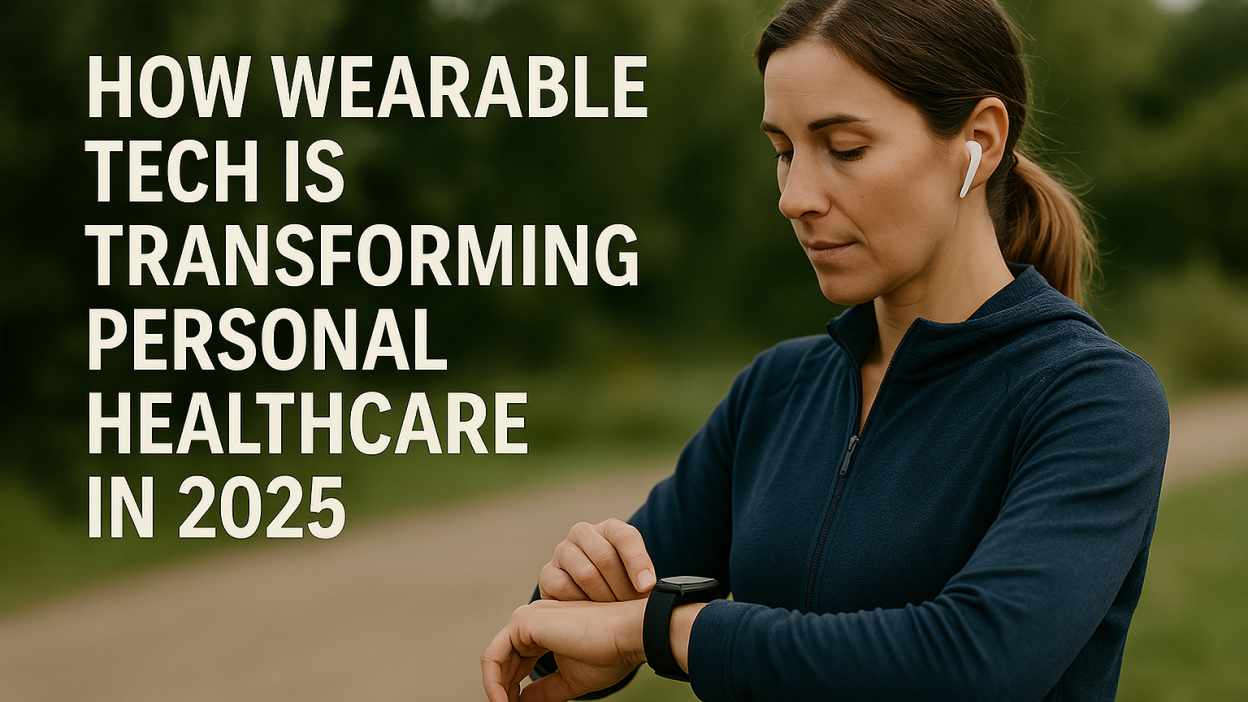In today’s fast-paced digital age, wearable technology is no longer just about counting steps or tracking sleep. It has evolved into a powerful tool that is revolutionizing personal healthcare. From early disease detection to real-time health monitoring, wearable devices are empowering individuals to take charge of their well-being like never before.
In this blog post, we’ll dive deep into how wearable tech is transforming healthcare in 2025, the top devices leading the trend, and what the future holds for personalized medicine.
📈 The Rise of Wearable Technology in Healthcare
The global wearable healthcare market is projected to exceed $60 billion by 2025, driven by rising health awareness, an aging population, and increasing interest in preventive care.
Key drivers include:
- Growth in remote patient monitoring post-pandemic
- Integration of AI and IoT in health tech
- Demand for real-time health insights
🔍 What Are Wearable Health Devices?
Wearable health devices are technology-enabled gadgets worn on the body to track and monitor various health metrics. These can include:
- Smartwatches (e.g., Apple Watch, Fitbit, Samsung Galaxy Watch)
- Fitness trackers (e.g., Garmin, WHOOP)
- Smart rings (e.g., Oura Ring)
- Medical-grade wearables (e.g., continuous glucose monitors, ECG patches)
- Wearable biosensors for chronic disease management
🧠 How Wearables Are Transforming Personal Healthcare
1. Real-Time Health Monitoring
Wearables collect continuous health data—heart rate, oxygen saturation, blood pressure, ECG, sleep cycles—providing a 24/7 snapshot of your health.
Benefits:
- Early warning signs for heart disease, atrial fibrillation, sleep apnea
- Alerts for abnormal heart rhythms or oxygen dips
- Personalized insights to improve lifestyle habits
“Over 30% of users have detected a potential health issue through their wearable device.” — Statista Health Tech Survey, 2025
2. Chronic Disease Management
Devices like Dexcom G7 or FreeStyle Libre 3 help diabetics track glucose levels in real time. Wearables also aid in managing:
- Hypertension
- Asthma
- COPD
- Heart failure
3. Fitness & Preventive Wellness
Smartwatches and fitness bands are evolving from basic step counters to advanced health assistants.
- VO₂ max estimation for cardiovascular health
- Stress detection via heart rate variability
- Smart coaching and guided workouts
- Sleep optimization through recovery tracking
4. Mental Health & Stress Management
New wearables integrate mood detection, mindfulness reminders, and breathing exercises.
Examples:
- WHOOP and Fitbit track stress scores
- Apple Watch offers mindfulness and Breathe app
- Muse headbands guide meditation with real-time brainwave feedback
5. Remote Patient Monitoring (RPM)
Hospitals and clinics now issue wearables to patients for home monitoring.
- Reduces hospital readmissions
- Provides continuous data to physicians
- Enables telehealth and virtual care workflows
🔬 Innovations to Watch in 2025
| Innovation | Description |
|---|---|
| Non-invasive glucose sensors | Monitors sugar levels without piercing skin |
| Smart textiles | Clothes with built-in ECG, temperature, and hydration sensors |
| AI-powered diagnostics | Algorithms that detect patterns and flag risks |
| Battery-less wearables | Devices powered by body heat or movement |
| Digital twins | Virtual models of individuals for predictive health planning |
📱 Top Wearable Health Devices in 2025
| Device | Key Features |
|---|---|
| Apple Watch Ultra 3 | ECG, blood oxygen, crash detection, AI health coaching |
| Fitbit Charge 6 | Stress score, sleep stages, daily readiness |
| Oura Ring Gen 4 | Temperature, recovery, menstrual prediction |
| Garmin Venu 3 | Pulse Ox, sleep score, body battery insights |
| Dexcom G7 | Continuous glucose monitor with real-time alerts |
🛡️ Privacy & Data Security Concerns
While wearable tech offers immense benefits, users must remain cautious about data privacy and third-party access.
Tips for safe usage:
- Read privacy policies carefully
- Use secure apps with encryption
- Avoid sharing data with non-healthcare entities
🔮 The Future of Wearables in Personal Healthcare
By 2030, we can expect wearables to:
- Integrate directly into electronic health records (EHR)
- Use AI to predict illness before symptoms appear
- Become fully personalized based on genomics and lifestyle
- Be recommended or prescribed by physicians for routine use
🧠 Final Thoughts: Empowering Everyday Health
Wearable tech is democratizing access to healthcare by putting powerful tools directly on our wrists and fingers. As innovation accelerates, these devices will continue to transform how we prevent, monitor, and manage health—giving everyone the power to live longer, healthier lives.
Whether you’re a fitness enthusiast, a patient managing a chronic condition, or just someone curious about optimizing your health, wearable technology in 2025 is a game-changer.





